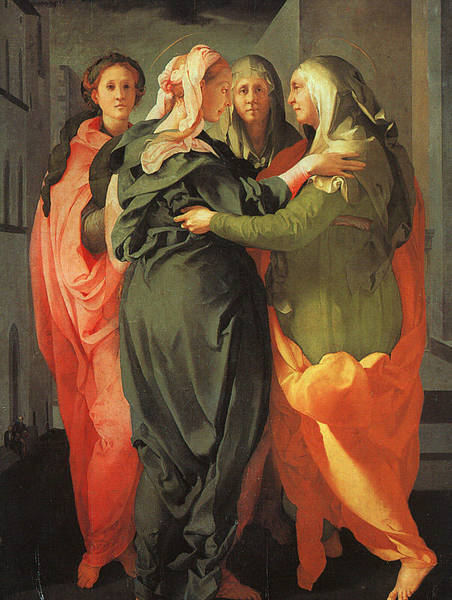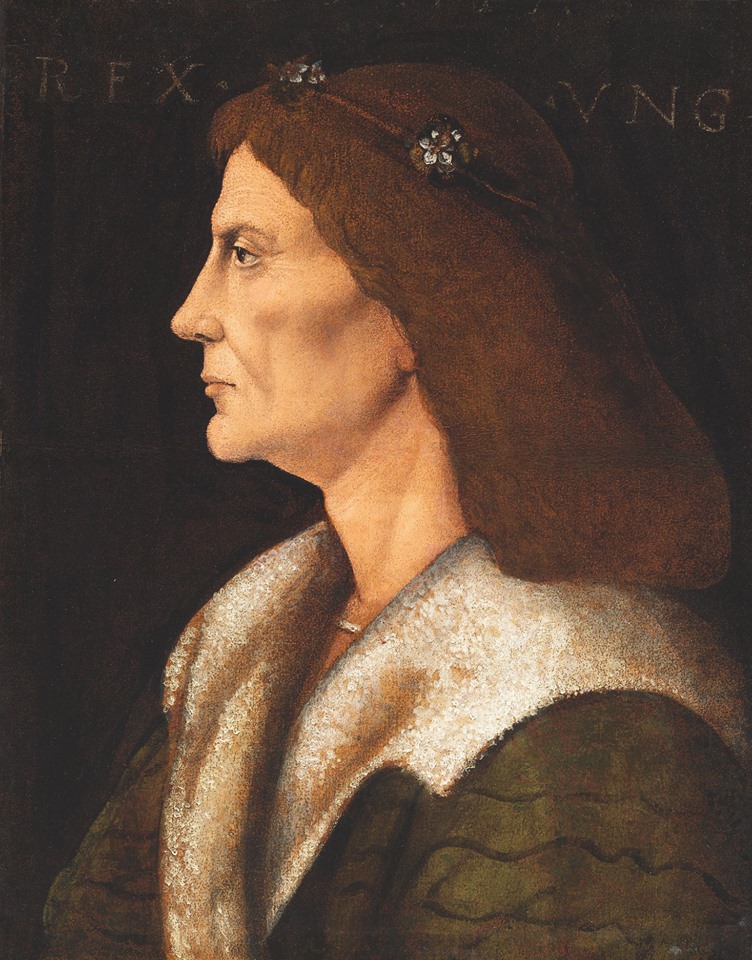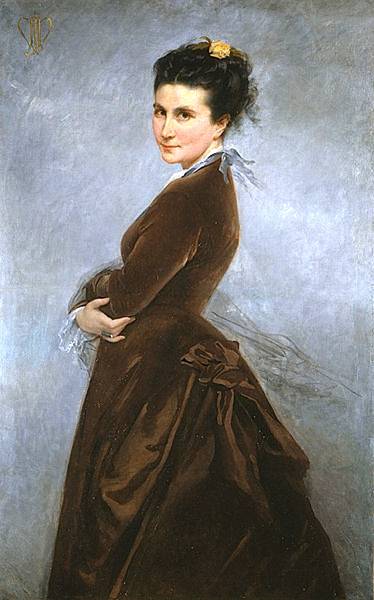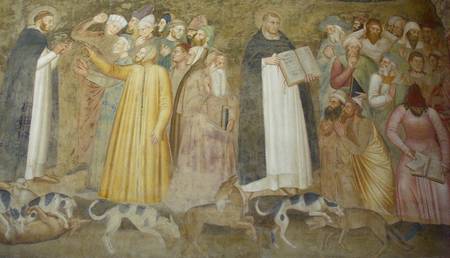by Alta Macadam
A major exhibition now running at Palazzo Strozzi in Florence (on until 20 July 2014) is dedicated to two of the most famous protagonists of Mannerism in Italy. It traces the highly individualistic styles of Pontormo and Rosso Fiorentino, both born in the same year, 1494, and who both started out their careers in the Florentine workshop of Andrea del Sarto. The exhibition’s sub-title, ‘Diverging paths of Mannerism’, makes clear the intention is to illustrate the wide differences in style of these two masters. The texts throughout the show often cite Vasari, who first used the term maniera to describe his contemporaries’ way of painting. This ‘mannered’ style, characteristic of the painters who were at work immediately after the great era of Raphael and Michelangelo, was long considered affected and even decadent, but since the 20th century it has been recognised that these 16th-century painters explored new ideas and that their work is often characterised by extreme elegance and refinement.

The visitor is greeted by three huge frescoes from the Santissima Annunziata: on either side of a biblical scene by Andrea del Sarto are the Assumption by Rosso and the Visitation by Pontormo, both of which stand out for their originality. In Rosso’s memorable crowd of Apostles there are numerous different expressions and stances, while Pontormo’s fresco has great elegance and the two central figures portray a touching intimacy.
One entire room is dedicated to portraits by Pontormo. Beside his well-known posthumous ‘official’ Portrait of Cosimo il Vecchio, in his bright crimson cloak, is displayed his much more intimate Double portrait of two friends from the collection in Palazzo Cini in Venice (which is not regularly open to the public so this is a great chance to see this unusual work). It is displayed beside the engaging Young Man from the Palazzo Mansi in Lucca. Two of Pontormo’s best male portraits, both sitters shown holding books, are on loan from the National Gallery in Washington and a private collection. Rosso is also given a room of his own to display his portraits: arguably the two most accomplished are those from the Uffizi and the Pitti.
Rosso’s Marriage of the Virgin from San Lorenzo is one of his loveliest altarpieces, crowded and full of colour. Pontormo’s work in the chapel of Santa Felicita, with his famous frescoes, are understandably not present in the exhibition (but can be seen just a few steps away across the Arno), but the lovely little stained-glass window from the chapel and the painted tondo have been brought here so that they can be seen at close range. His Crucifixion, salvaged from a tabernacle near Villa della Petraia and housed in the Accademia delle Arti del Disegno, is also on show, and even though greatly damaged it demonstrates his skills in this medium. Pontormo’s small Madonna and Child with the Young St John is here too, from the Corsini Collection (a private collection, the most important to have survived in Florence, but long closed to the public, so this is a welcome opportunity to see it).
Pontormo’s greatest work is the Visitation from the church of Carmignano close to Florence. Mary is shown embracing her older cousin Elizabeth (mother of John the Baptist) in the presence of two women looking out of the painting, Mary and Elizabeth’s ‘alter egos’. It has been restored for the exhibition and its colour and composition make it one of the masterpieces of 16th-century Italian painting. In the same room is Rosso’s Deposition from the church of San Lorenzo in Sansepolcro, one of his highest achievements (also recently restored so that all the details, some quite bizarre, are far more visible). His small painting of the Death of Cleopatra (now in Braunschweig), the only secular painting he produced before he left Italy for France, is particularly beautifully painted, and this is a rare occasion to see this little-known work.
The last room illustrates Rosso’s activity at the French court of François I in Fontainebleau, where he spent the last years of his life, and includes a magnificent tapestry illustrating the battle of the Lapiths and Centaurs, made there on a cartoon by Rosso (and now in Vienna).
The curators of the exhibition are Antonio Natali (much-admired director of the Uffizi Gallery) and the art historian Carlo Falciani. The display, by the architect Luigi Cupellini, is excellent, with clear and helpful descriptions (‘textbooks’ are provided in each room to stimulate children’s interest). Dr James M. Bradburne, Director General of the Fondazione Palazzo Strozzi, is to be congratulated on continuing to produce important and thoroughly enjoyable exhibitions at Palazzo Strozzi. Its programme stands out as the liveliest element in the city’s current cultural scene.
Alta Macadam is the author of Blue Guide Florence, available in both print and digital formats.









